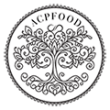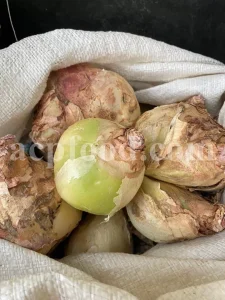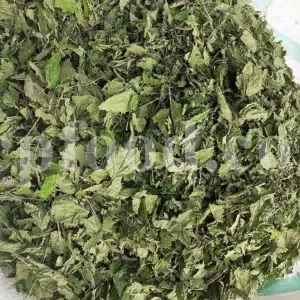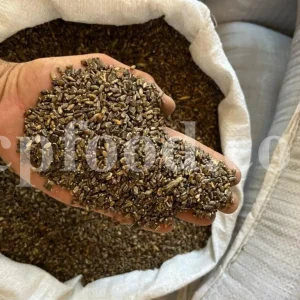Scientific Name: Drimia maritima (L.) Stearn
Synonyms: Scilla maritima L.
English Name: Squill
Other Names in English: Red Squill, Sea Onion, Sea Squill, Maritime Squill
Family: Asparagaceae
GENERAL DATA
Plant Parts: Bulb, root, leaves, seed
Cultivation Mode: Wild Collection
In Manufacturing: Pharmaceutical
🌿 Industries That Use Dried Squill Bulb (Sea Squill) – Drimia maritima (L.) Stearn
Sea Squill, also known as Urginea maritima in older texts, is a traditional medicinal bulb primarily known for its cardiotonic and diuretic effects. Found along the Mediterranean coast, the dried bulb is a potent herbal ingredient used in modern and traditional medicine, especially for heart health and respiratory conditions.
1. Pharmaceutical & Herbal Medicine
-
Widely used as a cardiac stimulant (especially red squill type)
-
Contains cardiac glycosides similar to digitalis (though less potent)
-
Prescribed in traditional systems for:
-
Congestive heart failure
-
Arrhythmia
-
Edema and fluid retention
-
Chronic bronchitis and cough (as an expectorant)
-
-
White squill is preferred for internal use; Red squill is mostly used externally or as rodenticide
⚠️ Note: Due to its potency and potential toxicity, it’s used under strict dosage control and often in standardized extract forms
2. Veterinary Medicine
-
Used in traditional veterinary practices as a cardiotonic and respiratory remedy for livestock
-
Sometimes included in animal poultices for inflammation or swelling
3. Pesticide / Rodenticide Industry
-
Red Squill contains a compound called scilliroside, which is highly toxic to rodents but relatively safe for other animals (who tend to vomit it out)
-
Used as a natural rodenticide in agricultural settings
4. Traditional & Ethnobotanical Applications
-
Used in folk remedies to treat water retention, asthma, and even sciatica
-
Occasionally burned or powdered in small quantities for ritual protection or warding off pests
🌿 Summary Table
| Aspect | Description |
|---|---|
| Common Names | Sea Squill, White Squill, Red Squill, Urginea |
| Scientific Name | Drimia maritima (L.) Stearn |
| Plant Part Used | Dried bulb (whole or sliced) |
| Primary Uses | Heart failure, diuretic, cough remedy, rodenticide |
| Industrial Forms | Dried bulb slices, powder, tinctures, standardized glycoside extracts |
| Toxicity | Toxic in high doses; should be used with medical supervision |
| Traditional Systems | Unani, Greek, European herbalism, Mediterranean ethnomedicine |
🧪 Key Compounds
-
Scillaren A and B (cardiac glycosides)
-
Scilliroside (rodenticide-active)
-
Flavonoids
-
Sterols
PRODUCT NAME IN DIFFERENT LANGUAGES
Persian Name: پیاز عنصل، پیاز دشتی/ Piaz Onsol, Piaz Dashti
German Name (Deutschland, Austria, Switzerland): Meerzwiebel
French Name (France, Belgium, Switzerland, Quebec): Scille maritime, Scille de Mer, Racine de Scille maritime, Urginea
HARVEST CALENDAR
Feb
Mar
Apr
May
Jun
Jul
Aug
Sep
Oct
Nov
Dec
To order Sea Squill bulb, please contact us.
About Drimia Maritima
Drimia maritima is a perennial underground plant whose height reaches one meter.
The main stem of this plant is straight, hollow, pink, opaque and its cross section is circular.
The leaves are elongated, relatively wide, shiny and slightly twisted, and they create a compact part in the upper section of this plant, and in general they are similar to the leaves of the lily plant.
Flowers are white or grayish white and small and grow in clusters in the upper half of its stem. Each flower has six almost oval petals and is connected to the main stem by a small petiole.
Its fruit is olive-brown in color and has 3 cells, each cell contains 3 to 4 round and dark seeds.
Its seeds are similar to onion seeds. But a little bigger.
The onion or underground tuber of this plant, which is usually used in traditional medicine, is large and bulky, measuring 10-15 x 8-20 cm. The weight of each onion sometimes reaches 3 kg and it is usually taken out from under the soil in autumn. After harvesting, bulbs are cleaned and out layers which are red, dry, thin and unusable are removed.
The inside of the bulb is cleaned, then it is cut into thin pieces with a sharp blade, dry and keep in a cool place, if not they will stick together. Unlike the outer layers of the bulbs, the inside layers are thick and white and full of slimy juice, odorless but very bitter and spicy. In the international market, two types are usually offered: one in red and the other in white.
The best type of Squill bulb is pear-shaped, shiny yellow-white, medium in size, and has a spicy, bitter and slightly sweet taste.
Drimia Maritima Chemical Constituents
Scillipicrine, scillitoxin, silane, scillaren A, scillaren B, scillaren C, scilliroside, sterol, choline.
Sea Squill Temperament
Hot in the third degree and dry in the second degree.
Sea Squill Health Benefits
Squill bulb is a laxative for thick humors, eye tonic, throat tonic, food digester, bladder stone destroyer, emmenagogue, and digestive power tonic. Its seeds are laxative.
Squill bulb absorbs the thick and slimy humors from body’s organs and expels the excrement from deep inside the body. Also, improves epilepsy, melancholia, temple pain, headache, dizziness, eye twitching, paresis, paralysis, facial nerve paralysis, forgetfulness, cataracts, ear pain, shortness of breath, chronic cough, rough throat, vomiting blood, dropsy, stiffness of the spleen, stomach cramps, joints pain, sciatica, dysuria, internal ulcers, neuralgia, alopecia areata, and leprosy.
Eating 5 grams of a uniform mixture of Drimia maritima bulb with six times salt and some oil on an empty stomach is laxative and helps to cure the mentioned diseases.
Eating 3.5 grams of grilled Sea Squill bulbs alone or with honey is useful for curing dizziness, epilepsy, melancholy, relaxation, paralysis, and facial nerve paralysis. If you cook Drimia marimia with twice of honey, eating it will help to treat shortness of breath and hoarseness. Eating 2 grams of this bulb cooked in honey improves stomach pain and weakness, indigestion, jaundice, old cough, shortness of breath, bloody sputum, colic and urinary retention. Eating 2 grams of grilled Red Squill bulbs with honey drink is beneficial for leprosy.
If you cover this bulb with clay, cook it under fire, then mix some of it with onion, garlic and a little salt, eating 11 grams of it with cooked rice will remove any kind of worms from the stomach.
Eating 0.25 grams of pounded Sea Onion bulb with its root is a strong emetic. If you put two eggs without shell in the middle of this bulb and heat it until it is cooked, eating these eggs is laxative.
Rubbing the poultice of Drimia marimia on the head, legs and thighs is very beneficial for Alzheimer. If you mix a small amount of Marsh Mallow (Althaea officinalis L.), Wormwood (Artemisia absinthium L.), Aloe resin (Aloe succotrina Lam.), Myrrh (Commiphora myrrha), and Terebinth gum (Pistacia terebinthus L.) in equal proportions, and heat the grated Squill bulb on the fire to the extent that its intensity decreases. Then mix it with the previous combination, its poultice on the head and areas on the legs, thighs, knees and soles of the feet which hijama has been done on them, is useful for fissure caused by extreme coldness, warts and Alzheimer.
Maritime Squill bulb poultice with beeswax and a small amount of sulfur improves malignant wounds, dry scabies, pruritus and psoriasis. The poultice of cooked Squill bulb with vinegar is beneficial for snake bites.
If you grind the inner layers of Red Squill bulb with vinegar, mix it with oil and apply it on the body in the bathroom, it will cure any type of vitiligo. If you finely chop this bulb and boil it in lily oil until it is dry and partially burnt, then mix it with oil and apply it on the body, it is useful for joint pain, gout, pain and ear congestion.
If you mix Onion leaves with twice honey, drinking it is beneficial for shortness of breath.
Drimia maritima seed improves stomach cramps, anal pain and eye pain. If you knead the grinded seeds of on Drimia maritima with vinegar, make a small ball out of it and put it between Figs. Then soak it in diluted honey for a day, sucking this Fig and drinking warm water is very beneficial for colic.
Preparation Instruction for Squill Bulb Vinegar
Sea Onion bulb Vinegar cuts the thick and slimy humors, and removes black bile from burning phlegm, and is beneficial for the diseases caused by these humors. It is a tonic for the stomach and it is useful for brain diseases such as melancholy, madness, obsession, epilepsy, vertigo, Alzheimer and paralysis, facial nerve paralysis, brain stroke and body weakness. Its drops are useful for earaches that are not caused by wounds, hearing difficulties, and keeping it in the mouth for mouth, gum, and tooth diseases. In short, Sea Squill bulb vinegar is also useful for all the cases mentioned for its bulb.
Middle and dried flesh leaves of Maritime Squill bulb 5 units, crystallized acetic acid 1 unit, white grape vinegar 49 units. Half pound the Squill bulb and mix it with other ingredients in a crystal container, soak it for 8 days, stir it time to time, and then press it through a cloth, strain it with paper, and store it. This vinegar is very useful for absorbing and expelling breast secretions and at the same time it is a diuretic. Its dosage amount for each time of consuming is 2 to 5 grams, which can be mixed with a tasty beverage before consumption.
Preparation Instruction for Squill Bulb Honey Sekanjebin
Red Squill bulb vinegar 1 unit, white honey 4 units. Cook it in a porcelain or silver dish so that the same weight of honey that was consumed is obtained. The amount of consumption of this kind of Sekanjebin is 15 to 60 grams, which can be used in a decoction or a suitable tasty beverage.
Preparation Instruction for Squill Bulb Powder
Heat middle flesh leaves of Sea Squill bulb in a hothouse at 40 degrees centigrade, dry and grind them soft and passed through a silk sieve No. 120 of Pharmaceuticals. This powder is very moisture absorbent and should be dried in a hothouse again after preparation and then store in a dry place. This powder is very diuretic and its consumption dosage is 1 to 3 decigrams, which is usually taken as a pill.
Preparation Instruction for Squill Bulb Honey
The dried middle flesh leaves of Sea Onion bulb 1 unit, boiling water 16 units and white honey 12 units. Brew Maritime Squill bulbs in boiling water and strain it, add honey and bring it to the consistency of syrup. The consumption dosage of this honey is 10 to 50 grams, which can be mixed in a suitable tasty beverage.
Preparation Instruction for Squill Bulb Diuretic Pills
Squill bulbs 5 centigrams, Digitalis nervosa powder 5 centigrams, Scammony resin (Convolvulus scammonia) 5 centigrams, mix and make tablets and eat 3 tablets a day.
Sea Squill Dosage
Up to 5 grams.
Side Effects of Squill Bulb
It’s harmful to the nerves of hot temperaments and pregnant women.
Eating Red Squill bulb causes headache and nausea.
Applying it raw on the skin causes sores. This bulb has an irritating effect on the skin, especially on the mucous membranes of the body. For this reason, it is considered one of the poisonous bulbs, which should be used with caution, especially for oral use.
It is very dangerous to eat more than 5 grams. Especially if it is raw.
Squill Bulb Modifiers
Sugar cube and rock candy to relieve headache and nausea.
For the wound caused by Sea Onion bulb, you can use pounded litharge mixed with water on the wounds.
If someone gets sick as a result of eating Sea Squill bulb, he/she should vomit, drink cold temperament herbs, slimy mucilage of seeds such as Plantago ovata, cold temperament fruit juices and fatty pottages.
🧾 Nutrition Facts – Dried Squill Bulb (Sea Squill) (Drimia maritima (L.) Stearn) (Per 100 g)
Botanical Name: Drimia maritima (L.) Stearn
Common Names: Sea Squill, Urginea, Sea Onion, Maritime Squill
Part Used: Dried bulb scales
Culinary and Traditional Use: Not a culinary plant due to toxicity; historically used in very small, controlled amounts in traditional medicine, mainly for cardiovascular and expectorant purposes under professional supervision.
🔹 General Composition (Per 100 g, dried)
| Nutrient | Amount | % Daily Value (DV) |
|---|---|---|
| Calories | ~278 kcal | 14% |
| Water (residual) | ~6 g | — |
| Protein | ~8.1 g | 16% |
| Total Fat | ~1.5 g | 2% |
| • Saturated Fat | ~0.3 g | 2% |
| Carbohydrates | ~72 g | 26% |
| • Dietary Fiber | ~9.4 g | 34% |
| • Natural Sugars | ~5.6 g | — |
⚠️ Contains potent cardiac glycosides — not safe for consumption outside of medicinal dosing by experts.
🔬 Mineral Content
| Mineral | Amount | %DV |
|---|---|---|
| Potassium | 1210 mg | 26% |
| Calcium | 312 mg | 24% |
| Magnesium | 95 mg | 23% |
| Phosphorus | 188 mg | 15% |
| Iron | 6.9 mg | 38% |
| Zinc | 1.2 mg | 11% |
| Manganese | 0.76 mg | 33% |
| Copper | 0.42 mg | 47% |
| Sodium | 32 mg | 2% |
🌿 Vitamin Content
| Vitamin | Amount | %DV |
|---|---|---|
| Vitamin C (Ascorbic Acid) | 7.5 mg | 8% |
| Niacin (Vitamin B3) | 1.8 mg | 11% |
| Riboflavin (Vitamin B2) | 0.09 mg | 7% |
| Thiamine (Vitamin B1) | 0.05 mg | 4% |
| Folate (Vitamin B9) | 28 µg | 7% |
| Vitamin A (RAE) | 41 µg | 5% |
| Vitamin E (α-Tocopherol) | 0.6 mg | 4% |
🧪 Phytochemical & Bioactive Compounds
-
Cardiac glycosides (e.g., scillaren A, scilliroside) – extremely potent, affecting heart muscle contractions
-
Saponins – foaming glycosides with expectorant action
-
Phenolic acids – antioxidant potential
-
Mucilage – soothing effect in very small amounts (not edible dosage)
🩺 Health Benefits (Traditional Context – Medicinal Only)
| System | Potential Effects |
|---|---|
| Cardiovascular | Historically used for certain heart conditions (similar to digitalis effect) |
| Respiratory | Expectorant in chronic bronchitis |
| Edema | Diuretic effect in controlled doses |
⚠️ Highly toxic if misused. Dosing must be precise and handled by a qualified herbalist or medical professional.
⚠️ Usage & Safety Notes
-
Not for direct culinary use – medicinal only.
-
Toxic at high doses — symptoms include nausea, vomiting, arrhythmia, and potentially fatal outcomes.
-
Contraindicated in pregnancy, children, and people with heart disease unless prescribed by a physician.
-
Must be stored out of reach of children and pets.
📦 Storage Guidelines
-
Store in airtight, labeled containers away from food herbs
-
Keep in a cool, dry, well-ventilated place
-
Shelf life: 18–24 months if stored properly
📌 Disclaimer
Nutritional values are approximate and provided for botanical reference. This plant contains toxic compounds and is not a food item. For medicinal use, consult a qualified healthcare provider.
To order Drimia maritima bulb, please contact us.







Reviews
There are no reviews yet.